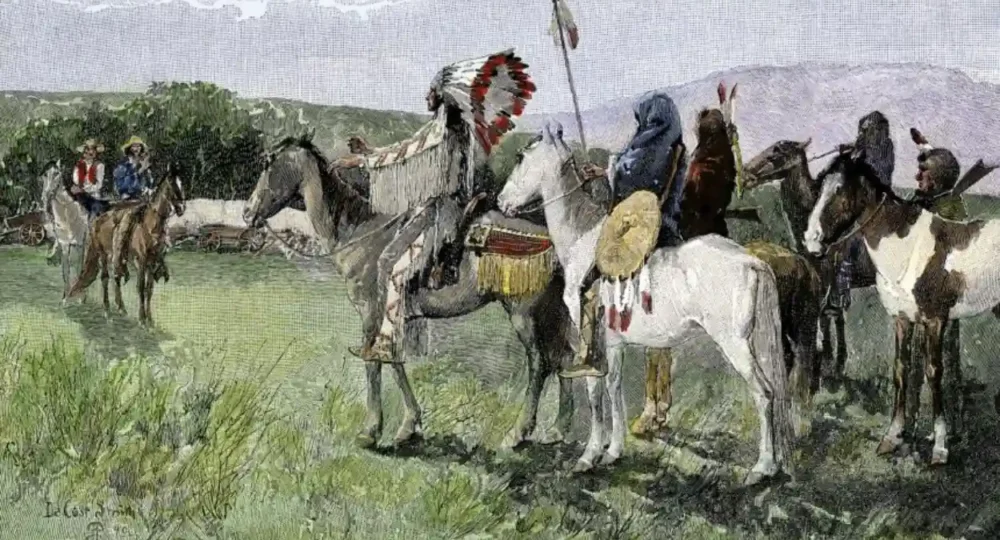European Settlement (1700s–1850s)

The story of King County’s transformation from a land stewarded by indigenous peoples to a cornerstone of the Pacific Northwest begins with the era of European exploration and early American settlement. This period, spanning from the late 1700s through the mid-1800s, saw the arrival of explorers, fur traders, and pioneers whose ambitions and actions would forever reshape the region’s demographics, land use, and cultural landscape.
The Age of Exploration: Mapping the Pacific Northwest
European interest in the Pacific Northwest was ignited by the search for the fabled Northwest Passage and the promise of lucrative resources. Spanish expeditions, led by Juan Pérez in 1774 and Bruno Heceta in 1775, were among the first to chart the Washington coastline. Their voyages, though brief, established Spain’s early—if tenuous—claims to the region.
The British quickly followed. Captain James Cook’s 1778 expedition opened the area to the maritime fur trade with China, drawing British fur companies and Russian traders into the fray. In 1787, Charles William Barkley discovered the inland channel that would later be named the Strait of Juan de Fuca. The following year, John Meares, another British explorer, confirmed its existence, while in 1792, Captain George Vancouver’s meticulous mapping of Puget Sound laid the groundwork for future settlement. That same year, American fur trader Robert Gray sailed up the Columbia River, establishing the United States’ claim to the territory drained by its waters.
These early explorations set off a cascade of encounters with indigenous peoples, forever altering the region’s dynamics. The fur trade, in particular, became a powerful force, drawing Native and European interests into a complex web of cooperation and conflict.
The Fur Trade and the Hudson’s Bay Company
By the early 19th century, the British Hudson’s Bay Company (HBC) had become the dominant economic and political presence in the Pacific Northwest. The HBC established a network of trading posts and forts, including Fort Nisqually on lower Puget Sound in 1833—just south of present-day King County. The company’s presence introduced new goods, technologies, and diseases, and fundamentally altered indigenous economies and societies.
The HBC’s activities were not limited to fur trading. The company introduced farming, cattle raising, and new land management practices, setting the stage for the agricultural transformation of the region. Their extensive trade networks connected the Puget Sound to global markets, while also intensifying competition with American settlers and traders.
Territorial Disputes and Shifting Boundaries
The early 19th century was marked by intense rivalry between the United States and Britain for control of the Oregon Country, which included present-day Washington. Following the War of 1812, the two nations negotiated a joint-use agreement to ease tensions, but the competition persisted. The 1846 Oregon Treaty finally established the U.S.-British boundary at the 49th parallel, opening the way for American settlement north of the Columbia River.
The Oregon Trail and the Donation Land Act
With the boundary dispute resolved, American settlers began arriving in increasing numbers via the Oregon Trail in the 1840s. The passage of the Federal Donation Land Act of 1850 was a watershed moment. This legislation offered free land to American citizens willing to occupy and improve it for five years, dramatically accelerating migration into the Puget Sound region. As prime lands south of the Columbia River were claimed, pioneers turned their attention northward, drawn by the promise of fertile soil, a temperate climate, and the deep natural harbor of Elliott Bay.
The First Settlers: Holgate, Denny, and the Alki Point Pioneers
Permanent Euro-American settlement in King County began in earnest in 1851. John C. Holgate was likely the first, traveling down the Duwamish River and staking his claim near what is now Elliott Bay. Soon after, a group known as the Denny Party—led by Arthur Denny, David “Doc” Maynard, John Low, C.D. Boren, and W.N. Bell—arrived by sea, initially landing at Alki Point in West Seattle before relocating to the more sheltered shores of Elliott Bay.
Other early settlers, including Luther Collins, Henry Van Asselt, and Jacob Mapel, established claims along the Duwamish and White River valleys. These pioneers were attracted by the region’s abundant natural resources: towering forests for timber, rich alluvial soils for farming, and waterways that offered transportation and trade.
Building Communities and Transforming the Land
The first years of settlement were marked by hardship and resilience. With limited reserves of money and food, settlers quickly set about clearing land, planting crops, and constructing homes. They often built on open prairies and clearings that had been maintained for centuries by indigenous burning practices. Early settlements sprang up along the Duwamish, White, Black, and Cedar rivers, as well as on prairies such as Muckleshoot, Porter’s, Ranger’s, Squak (now Issaquah), and Jenkins’ (now Maple Valley).
As communities grew, so did the need for transportation and commerce. The “Mosquito Fleet”—a flotilla of small steamboats—became the lifeline of the region, shuttling people and goods across Puget Sound and up navigable rivers. These steamers stimulated economic growth, fostered the development of local government, and connected isolated settlements to the burgeoning social life of the county.
Conflict and Consequence: The Indian Wars
The rapid influx of settlers and the imposition of new land claims led to rising tensions with indigenous communities. Many Native residents felt cheated by treaties they had been pressured to sign, which often ceded vast territories in exchange for promises that went unfulfilled. In 1855, these tensions erupted into violence. Hostile tribal members from eastern Washington crossed the Cascades, inciting warfare against settlers throughout the Puget Sound region.
Skirmishes, ambushes, and attacks—such as the killing of nine settlers in the White River Valley—sent waves of panic through the fledgling communities. Fort Dent and other blockhouses offered little protection, and many settlers fled to the safety of Seattle. The crisis, known as the “Indian Wars,” was soon quelled by regular Army troops and volunteer militias, with the Snoqualmie Tribe notably aiding in the settlers’ defense during the “Battle of Seattle.” In the aftermath, the indigenous population was devastated, and the path was cleared for unimpeded Euro-American expansion.
The Growth of Towns and Lasting Change
With the end of hostilities, settlers resumed their efforts to cultivate the land and build permanent communities. By the late 1850s, new settlements were established in the Snoqualmie Valley and at Squak Prairie. The region’s principal towns included Seattle, Squawk Valley (now Issaquah), Houghton (since disappeared near Kirkland), Newcastle (a former coal mining center), and Snoqualmie.
The legacy of these early years is evident in King County’s enduring patterns of land use, transportation, and community organization. The transformation from indigenous stewardship to Euro-American settlement brought profound changes—some beneficial, others deeply tragic. The forests were cleared, rivers redirected, and prairies plowed, setting the stage for the county’s future as a center of commerce, industry, and innovation.
The era of European exploration and early American settlement in King County was a time of discovery, ambition, and upheaval. Driven by the lure of land and opportunity, explorers, traders, and pioneers forged new communities and economies, forever altering the region’s landscape and its peoples. Their legacy, complex and contested, is woven into the very fabric of King County—a place where the stories of the past continue to shape the possibilities of the future.




